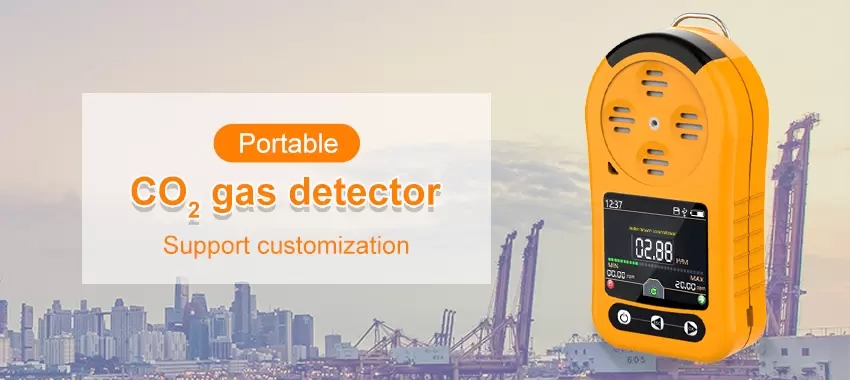CO2 monitors have emerged as a crucial tool in tracking and assessing air quality in various settings. In this article, we will delve into the importance of CO2 monitors, their working principle, applications, and the future prospects of this technology.

Importance of CO2 Monitors
Carbon dioxide is a colorless and odorless gas that is naturally present in the Earth’s atmosphere. However, excessive levels of CO2 can have detrimental effects on both indoor and outdoor air quality. In indoor environments, high levels of CO2 can lead to poor ventilation, causing headaches, drowsiness, and even impaired cognitive function. In outdoor settings, increased CO2 emissions contribute to climate change and global warming. Therefore, monitoring CO2 levels is crucial for maintaining healthy and sustainable living conditions.
Working Principle of CO2 Monitors

CO2 monitors operate based on the principle of non-dispersive infrared (NDIR) spectroscopy. They consist of a sensor that uses infrared light to detect and measure the concentration of CO2 in the air. Here’s how it works:
The CO2 monitor emits infrared light with a specific wavelength.
When the infrared light passes through the air, it interacts with the CO2 molecules present.
The CO2 molecules absorb some of the infrared light, while the rest passes through.
The monitor’s sensor measures the amount of infrared light absorbed, which is directly proportional to the concentration of CO2 in the air.
The monitor then displays the CO2 levels in parts per million (ppm) for easy interpretation.
Applications of CO2 Monitor
CO2 monitors find applications in various sectors where maintaining optimal air quality is crucial. Here are a few examples:
a. Indoor environments: CO2 monitor are invaluable in schools, offices, hospitals, and other indoor spaces where people gather. Monitoring CO2 levels helps ensure proper ventilation, minimizing the risk of respiratory issues and improving overall comfort.
b. Greenhouse management: CO2 monitor assist greenhouse operators in regulating CO2 levels to enhance plant growth. By monitoring and controlling CO2 concentrations, farmers can maximize crop yields and optimize photosynthesis.
c. Industrial settings: Industries that produce or emit large amounts of CO2, such as power plants and manufacturing facilities, utilize CO2 monitors to monitor emissions and ensure compliance with environmental regulations.
d. Transportation: CO2 monitor can be integrated into vehicles’ cabin systems to monitor and regulate CO2 levels. This helps to enhance air quality and the comfort of passengers, particularly in enclosed spaces like buses, trains, and airplanes.
Future Prospects of CO2 Monitoring
As technology advances, CO2 monitors are likely to become even more sophisticated and integrated into smart systems. Some potential future developments include:

a. Integration with home automation: CO2 monitor may be integrated with smart home systems, allowing automated adjustments to ventilation, air conditioning, and other environmental controls based on real-time CO2 data.
b. Wearable CO2 monitor: Compact and portable CO2 monitor could be developed for personal use, allowing individuals to monitor their exposure to CO2 levels and make informed decisions about their environment.
c. Internet of Things (IoT) integration: CO2 monitor could be incorporated into IoT networks, providing real-time data on air quality across entire cities or regions. This would enable effective planning and implementation of pollution control measures.
Conclusion
CO2 monitors play an essential role in tracking and ensuring optimal air quality in various environments. By accurately measuring CO2 levels, these monitors contribute to improved health, energy efficiency, and environmental sustainability. As technology continues to advance, the future looks promising for the development of even more sophisticated CO2 monitoring solutions, ultimately leading to a healthier and greener future for us all.